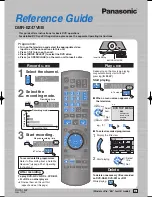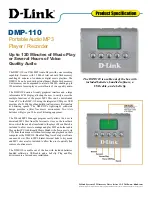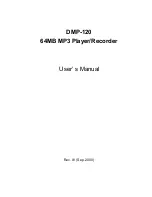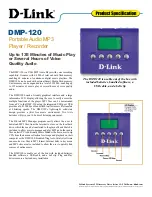
38
MDS-SE9
8. Press the
MD
.
or
MD
>
button so that the waveform of
the oscilloscope becomes the specified value.
(When the
MD
.
or
MD
>
button is pressed, the
of
“EFB=
” changes and the waveform changes) In this
adjustment, waveform varies at intervals of approx. 2%. Adjust
the waveform so that the specified value is satisfied as much as
possible.
(Write power traverse adjustment)
Traverse Waveform
9. Press the
[ENTER/START]
button, and save the adjustment results
in the non-volatile memory. (“EFB =
SAVE” will be
displayed for a moment)
10. “EFB =
MO-P” will be displayed.
The optical pick-up moves to the pit area automatically and
servo is imposed.
11. Press the
MD
.
or
MD
>
button until the waveform of
the oscilloscope moves closer to the specified value.
In this adjustment, waveform varies at intervals of approx. 2%.
Adjust the waveform so that the specified value is satisfied as
much as possible.
Traverse Waveform
12. Press the
[ENTER/START]
button, and save the adjustment results
in the non-volatile memory. (“EFB =
SAVE” will be
displayed for a moment)
Next “EF MO ADJUST” (C07) is displayed. The disc stops
rotating automatically.
13. Press the
Z
MD
button and take out the disc.
14. Load the check disc (TDYS-1).
15. Press the
MD
.
or
MD
>
button to display “EF CD
ADJUST” (C08).
16. Press the
[ENTER/START]
button to display “EFB =
CD”.
Servo is imposed automatically.
17. Press the
MD
.
or
MD
>
button so that the waveform
of the oscilloscope moves closer to the specified value.
In this adjustment, waveform varies at intervals of approx. 2%.
Adjust the waveform so that the specified value is satisfied as
much as possible.
Traverse Waveform
18. Press the
[ENTER/START]
button, display “EFB =
SAVE”
for a moment and save the adjustment results in the non-volatile
memory.
Next “EF CD ADJUST” (C08) will be displayed.
19. Press the
Z
MD
button and take out the check disc.
Adjustment Location: BD board (see page 40)
13. Focus Bias Adjustment
Procedure:
1. Load the test disc (MDW-74/GA-1).
2. Press the
MD
.
or
MD
>
button to display “CPLAY2
MODE” (C36).
3. Press the
[ENTER/START]
button to display “CPLAY 2MID”.
4. Press the
[MODE]
button when “C =
AD =
)” is
displayed.
5. Press the
MD
.
or
MD
>
button to display “FBIAS
ADJUST” (C09).
6. Press the
[ENTER/START]
button to display “
/
a =
T”.
The first four digits indicate the C error rate, the two digits
after “/ ” indicate ADER, and the 2 digits after “a =” indicate
the focus bias value.
7. Press the
MD
>
button and find the focus bias value at
which the C error rate becomes about 200 (refer to Note 2).
8. Press the
[ENTER/START]
button to display “
/
b =
T”.
9. Press the
MD
.
button and find the focus bias value at
which the C error rate becomes about 200.
10. Press the
[ENTER/START]
button to display “
/
c =
T”.
11. Check that the C error rate is below 20 and ADER is 00. Then
press the
[ENTER/START]
button.
12. If the “(
)” in “
-
-
(
)” is above 20, press the
[ENTER/START]
button.
If below 20, press the
[MODE]
button and repeat the adjustment
from step 2.
13. Press thet
Z
MD
button and take out the disc.
Note 1:
The relation between the C error and focus bias is as shown in
the following figure. Find points A and B in the following figure
using the above adjustment. The focal point position C is auto-
matically calculated from points A and B.
Note 2:
As the C error rate changes, perform the adjustment using the
average value.
A
B
VC
Specification A = B
A
B
VC
Specification A = B
A
B
VC
Specification A = B
C error
about
200
B
C
A
Focus bias value
















































